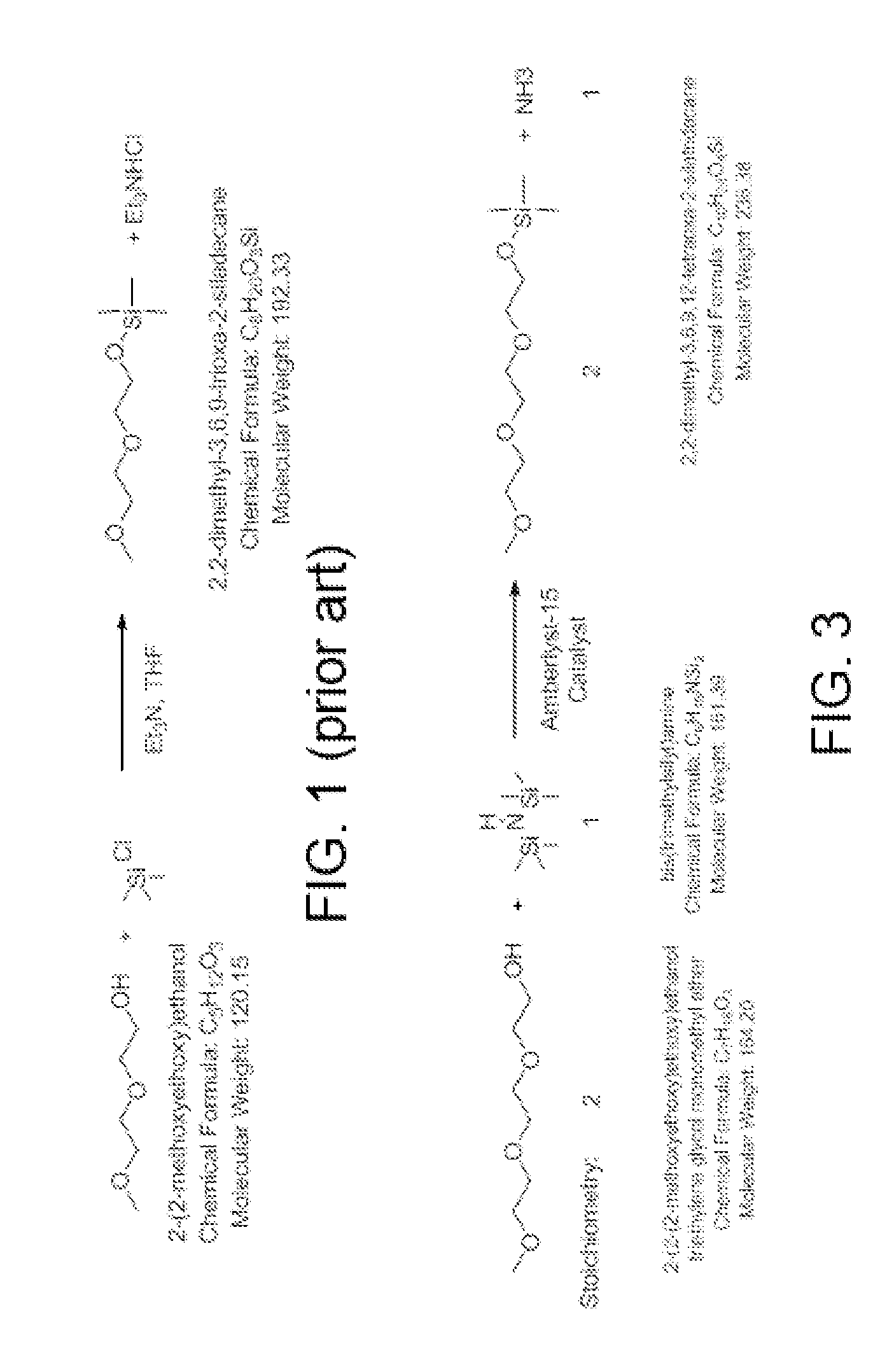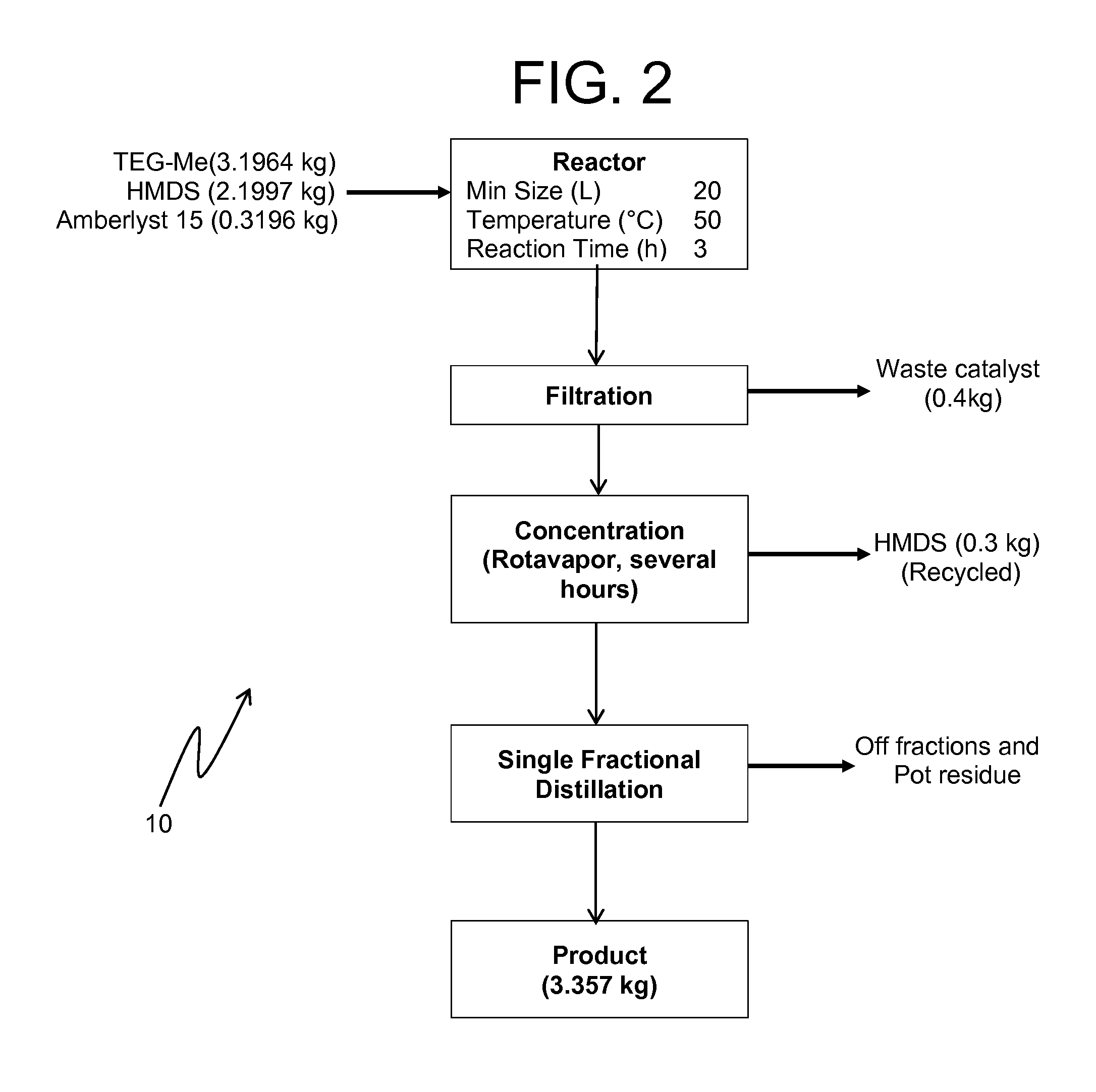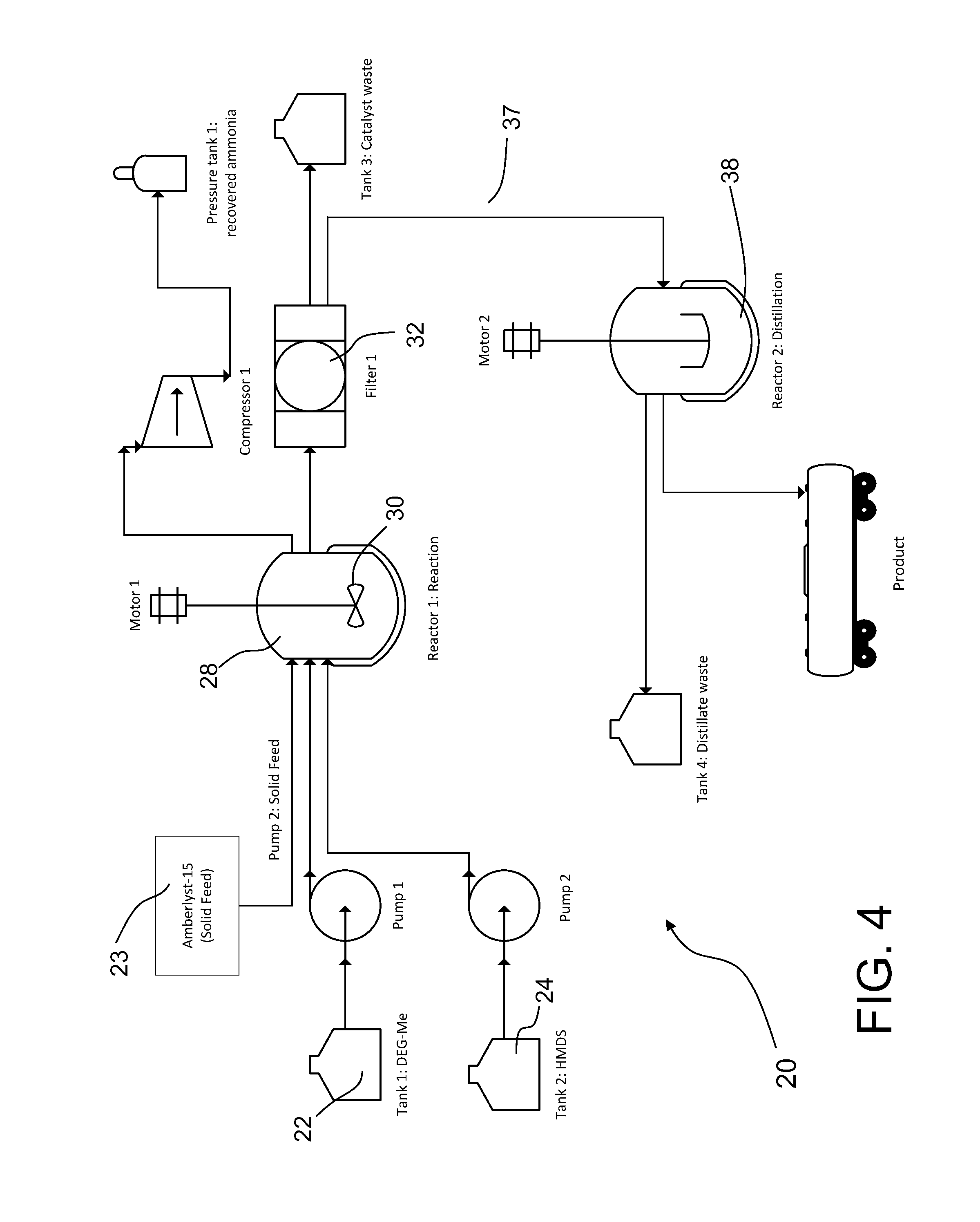Process for the production of low flammability electrolyte solvents
a technology of electrolyte solvent and low flammability, which is applied in the industrial field of producing electrolyte solvents, can solve the problems of high cost, high cost, and high cost of r&d for developing industrially scalable protocols, and achieve rapid industrial scale quantities, low cost, and low cost
- Summary
- Abstract
- Description
- Claims
- Application Information
AI Technical Summary
Benefits of technology
Problems solved by technology
Method used
Image
Examples
example 1
Preparation Detail for 2,2-dimethyl-3,6,9-trioxa-2-siladecane
[0047]A glass reactor (20 L, jacketed, Chemglass) equipped with drain valve, internal temperature probe, reflux condenser, gas inlet / outlet adapters and powder port was flushed with nitrogen. The jacket of the reactor was connected to a Huber 430 heating / chilling circulator. The gas outlet port was connected to a scrubber consisting of 10 L water in a polypropylene drum.
[0048]The reactor was charged with diethylene glycol monomethyl ether (7500.2 g, 62.42 mol, 1.0 eq, Aldrich lot MKBH7053V) and 1,1,1,3,3,3-hexamethyldisilazane (5544.3 g, 34.33 mol, 0.55 eq, Alfa lot F21Y010) Add Amberlyst-15 catalyst (375.6 g, 5 wt %, Aldrich lot MKAA0578).
[0049]The stirring speed was set to 120 rpm to keep the catalyst suspended. The circulator was set to control the process (internal reaction mixture) by slowly ramping the temperature up to 50° C. The reaction was followed by GC / FID (Agilent HP-5MS, 0.25 um, 30 m×0.250 mm, 30 deg / min), t...
example 2
Preparation Detail for 2,2-dimethyl-3,6,9,12-tetraoxa-2-silatridecane
[0052]A glass reactor (20 L, jacketed, Chemglass) equipped with drain valve, internal temperature probe, reflux condenser, gas inlet / outlet adapters and powder port was flushed with nitrogen. The jacket of the reactor was connected to a Huber 430 heating / chilling circulator. The gas outlet port was connected to a scrubber consisting of about 4 L water in a polypropylene drum.
[0053]The reactor was charged with triethylene glycol monomethyl ether (3196.4 g, 19.47 mol, 1.0 eq, TCI lot FGI01) and 1,1,1,3,3,3-hexamethyldisilazane (2199.7 g, 13.6 mol, 0.07 eq, Alfa lot H09W015 (1935.4 g) and lot 10151582 (264.3 g)). Add Amberlyst-15 (319.6 g, 10 wt %, Aldrich lot MKBD4929).
[0054]The stirring speed was set to 80-95 rpm to keep the catalyst suspended. The circulator was set to control the process (internal reaction mixture) by slowly ramping the temperature up to 50° C. The reaction was followed by GC / MS (Agilent HP-5MS, 0...
PUM
| Property | Measurement | Unit |
|---|---|---|
| time | aaaaa | aaaaa |
| temperature | aaaaa | aaaaa |
| temperature | aaaaa | aaaaa |
Abstract
Description
Claims
Application Information
 Login to View More
Login to View More - R&D
- Intellectual Property
- Life Sciences
- Materials
- Tech Scout
- Unparalleled Data Quality
- Higher Quality Content
- 60% Fewer Hallucinations
Browse by: Latest US Patents, China's latest patents, Technical Efficacy Thesaurus, Application Domain, Technology Topic, Popular Technical Reports.
© 2025 PatSnap. All rights reserved.Legal|Privacy policy|Modern Slavery Act Transparency Statement|Sitemap|About US| Contact US: help@patsnap.com



